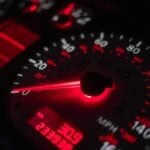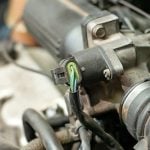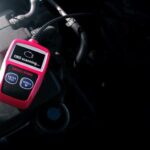P040D error code is a diagnostic trouble code (DTC) applicable to OBD-II vehicles in general. The precise repair steps may vary depending on the model year, manufacturer, and powertrain configuration. Read to know more.
What is the P040D error code?
Exhaust Gas Recirculation (EGR) temperature sensors are variable resistors that determine the exhaust gas temperature at the EGR cooler’s inlet and outlet. The Engine Control Module (ECM) supplies the EGR temperature sensor signal circuit with 5 volts and the low reference circuit with a ground.
The sensor resistance is high when the EGR temperature sensor is cold. It decreases as the EGR temperature rises. The ECM detects a higher voltage with a high sensor resistance on the EGR temperature signal circuit.
When sensor resistance is reduced, the ECM identifies a lower voltage on the EGR temperature signal circuit. When the ECM detects EGR temperature sensor resistance greater than 885 for more than 5 seconds, it will set the Diagnostic Trouble Code (DTC).
P040D error code: Symptoms
- The smog or emissions state could begin to fail.
- Starting to hear engine noises such as knocking, rattling, pinging, etc.
- Engine Light ON can begin blinking.
- Issue with louder exhaust.
- There may be numerous exhaust odors.
Error code P040D: Causes
- The wiring harness or sensor may have caught fire.
- The temperature of the recirculated exhaust gas harness for sensor ‘A’ may be open or shorted.
- A faulty electrical connection in the exhaust gas recirculation temperature is possible.
- Imperfections in the connector
- The exhaust gas recirculation temperature sensor can have defects.
- The EGR temperature sensor gasket has a leak.
- The sensor is mounted on an exhaust pipe that is cracked or leaking.
- Engine control module may have problems.
- Temperature sensor ‘A’ for exhaust gas recirculation exhibits anomalies.
P040D error code: Diagnosis
The following steps should be taken to diagnose this fault code:
Initially, you must visually inspect the sensor and the surrounding EGR system, specifically looking for exhaust leaks. Check the sensor and its harness as well. Keep in mind that high temperatures can wreak havoc on plastic and rubber-insulated wires, so thoroughly inspect them.
Consider that the black soot may indicate an exhaust leak in the vicinity. Various factors may have contributed to the accumulation of soot in the exhaust, which has caused numerous EGR problems (poor maintenance, low-quality fuel, etc.)
There is no exception in this instance, so it may be prudent to clean your EGR system or at least the temperature sensor. Be mindful that sensors mounted within the exhaust systems may feel seized when attempting to detach them.
Remember that these sensors are susceptible to significant temperature fluctuations, so a bit of heat from an Oxyacetylene torch (not for the uninitiated) may help loosen the sensor.
After removing the sensor, use carburetor cleaner or a comparable product to thoroughly soak the soot. Next, use a wire brush to remove excessively accumulated soot. When reinstalling the clean sensor, you must apply anti-seize to the threads to prevent them from seizing.
Measure the actual electrical values of the sensor and compare them to the manufacturer-specified ideal values. This can be accomplished with a Multimeter and manufacturer-specific pin-out testing procedures.
Fixes
- Replace or repair the temperature sensor for the exhaust gas recirculation system.
- It is crucial to repair the faulty wires.
- Restore the faulty connector with care
- It is always possible to replace a faulty engine control module.
- Ensure that the connections are repaired
- Properly repairing the EGR temperature sensor gasket leak is required.
If your OBD Code is still flashing, there is no need to stress because we are at your service. View our extensive selection of EGR valve cleaners, EGR systems, sensors, radiator leak sealants, and EGR cleaners. Now, your problems would vanish immediately.
How serious is P040D?
The severity of this problem depends a lot on your specific issue, and it’s not as severe as other codes. Still, exhaust leaks and leaking or broken EGR temperature sensors aren’t “good” for your car, so maintenance is the key, and you should do it as soon as possible.
Cost of diagnosing the P040D code
Auto repair rates depend on where you live, the make and model of your car, and even the engine it has. Most shops charge between $75 and $150 per hour to fix cars.

Sara Sam may not look like your typical car and finance expert, but don’t let that fool you. With over four years of experience in the industry, she knows all the ins and outs of cars, car insurance, and refinancing. You can trust Sara to help you navigate the often-confusing world of automobiles and financing.


















